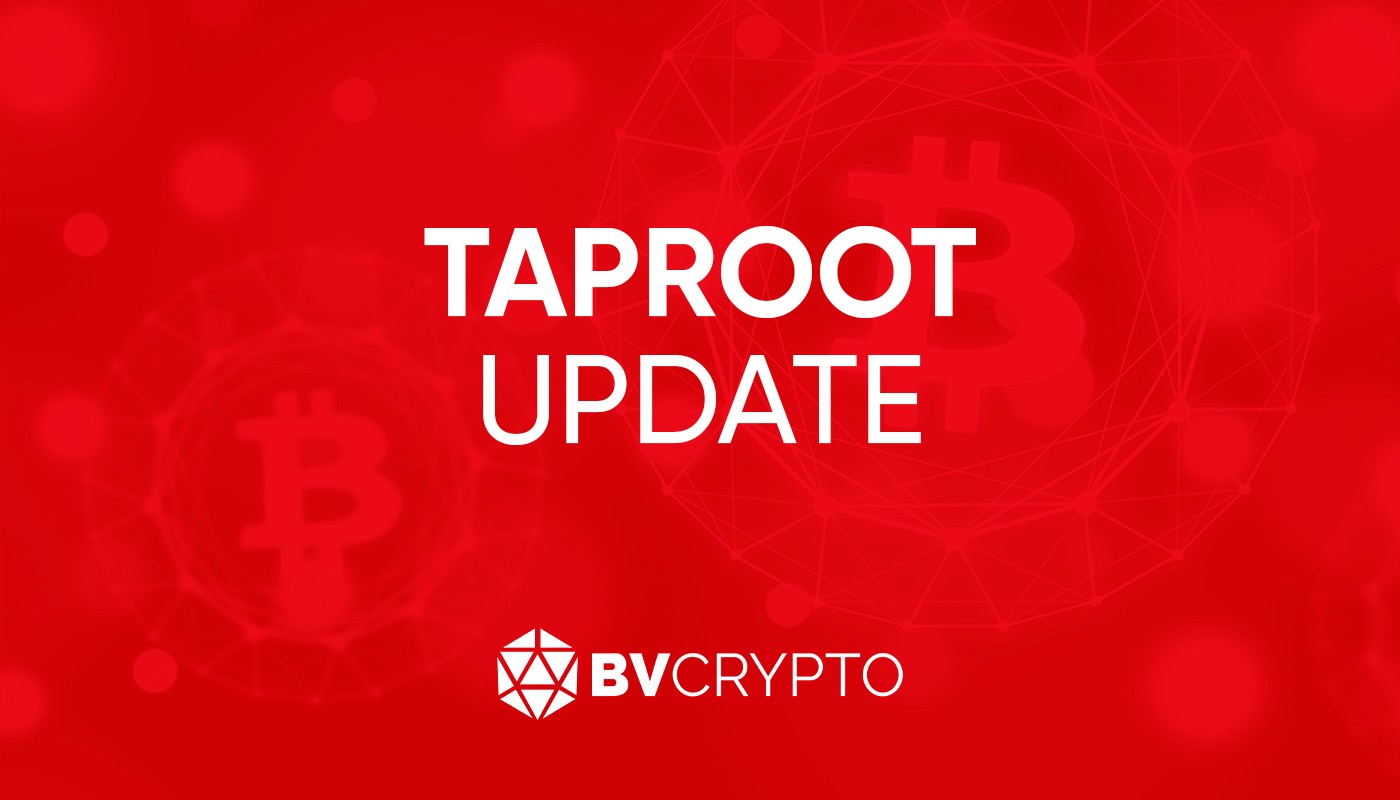
Bitcoin Taproot Update
Taproot Update
At the beginning of May, the voting process of the miners on whether the infrastructure update named Taproot should be integrated into the Bitcoin blockchain network has begun. The Taproot update, which became a current issue as a result of long-lasting discussions, aims to increase the number of participants in multiple transactions that can be made in Bitcoin’s blockchain network, increase the privacy of the network and reduce transaction fees with the digital signature called Schnorr Signature. In this article, we will examine the details of the Taproot update and the current situation in the miners’ voting process.
Bitcoin Improvement Proposal (BIP)
The term BIP refers to proposals for updating the Bitcoin blockchain. Update requests may include mechanisms that will directly change the operation of the network, as well as BIPs, for informational purposes only. Updates can be submitted to miners for approval through several different methods. If the majority of miners approve the update, the items of the update are integrated into the network, and if the sufficient majority cannot be achieved, the update is rejected and the existing Bitcoin network continues to operate.
The Taproot update has been submitted to miners’ approval over 3 BIPs, BIP-340, BIP-341, BIP-342, to propose significant changes regarding the privacy and complex infrastructure of the network. For the update to be accepted, miners must send the signal that indicates their approval of the Taproot update through blocks they will approve between May 1st and August 11th. Here’s how the approval process works exactly:
Two-week periods are set for voting between May 1 and August 11. In this way, miners can approve the update in the next period if they change their minds. In the 2-week period, 2016 blocks are processed in the Bitcoin network. For the update to be approved, approval of Taproot must be given in at least 1815 of the 2016 blocks. In other words, 90% of the blocks in the 2-week voting periods must be marked to approve Taproot. The periods will continue until August 11, and if the 90% majority is not achieved, the Taproot update will be automatically rejected and the offer will be withdrawn.
Whether the blocks in the 2-week periods are approved for Taproot update can be seen at taproot.watch and followed for the voting process. For example, as of May 26, 15% of the 2016 blocks have not received approval for the update, while 24.48% have not been processed yet. However, since a 90% majority is needed, it has become certain after 15% of rejection that the Taproot update will not be accepted during the current period. Therefore, the next period will need to be watched to see if the update will be approved.
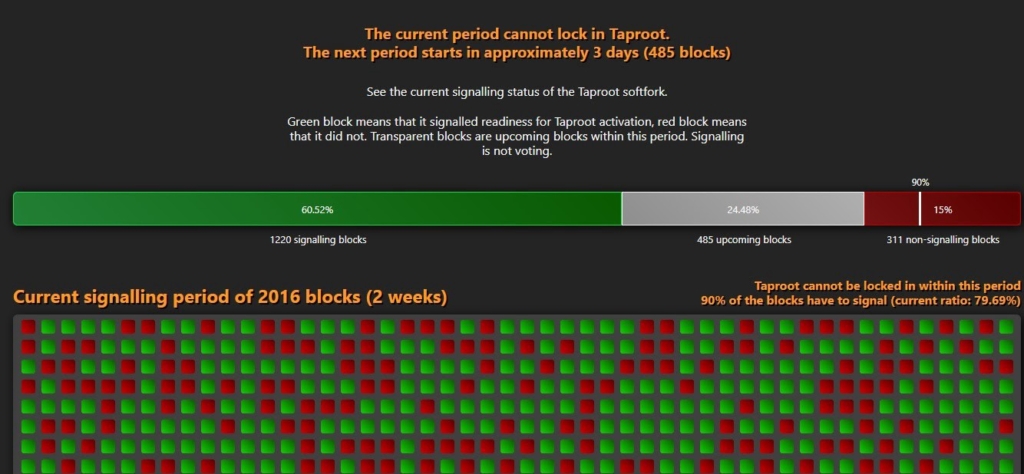
What will Taproot change?
In general, the Taproot update will bring additional privacy features to transactions on the Bitcoin blockchain network and enable the network to carry out multiple transactions, such as 100 to 300 people, in different cases. In this way, it can be said that the Bitcoin network will have a kind of smart contract infrastructure.
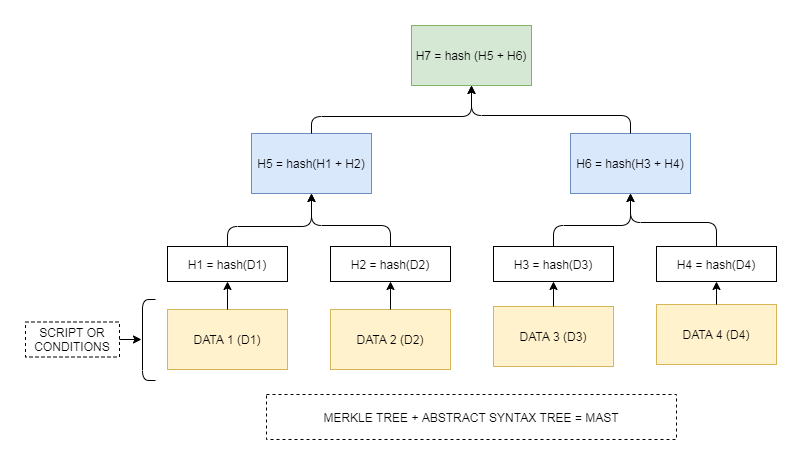
As it is known, each user with a Bitcoin wallet has a public key such as an IBAN and a secret key that ensures the security of the wallet. When a transaction is carried out on the Bitcoin network, the wallet owner who sent the Bitcoin signs the transaction with their own private key, and the sent amount can only be available for use when the recipient signs with their public and private keys. In multi-transactions, there is a situation that depends on the use of keys from more than one wallet. For example, you want to send BTC from wallet A to wallet B. However, let’s assume that wallet A is a common wallet and that BTCs will leave the wallet only if the sample users named Alice and George confirm the transaction with their private keys. In this case, both Alice and George using their own private keys to send money will appear as 2 separate transactions on the network.
The appearance of transactions on the network does not result in disclosure of the private keys, but each signing can be distinguished from normal transactions, i.e. transactions that do not require multi-signature, as each signing is seen as a separate transaction in the Bitcoin network. Being able to distinguish multi-transactions in this way can cause security problems for the wallets involved in the transaction.
Taproot, on the other hand, shows the signatures of Alice and George as a single signature, as in the example given above. In this way, since the multi-signature process takes place in a single transaction, it cannot be distinguished from ordinary transactions and privacy is improved. The Taproot process, which can be defined as an advanced MAST (Merkle Abstract Syntax Tree), works as shown in the image below.
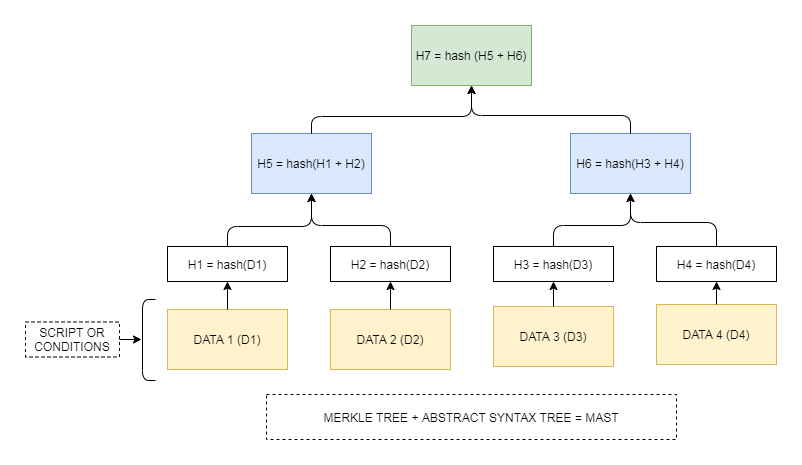
This structure, which resembles Pascal’s triangle, should be read from the bottom up. Each bubble such as DATA 1, DATA 2 seen at the bottom of the image represent data. This data can be a multi-signature as mentioned above, or it can be a ‘condition’ matched to the transaction. What is meant by condition here is the various conditions set for the transaction to take place. For example, if we continue with the example above, a condition can be set that the BTCs sent as a result of Alice and George signing the transaction can be spent after 3 months. These conditions can be matched with transactions by multiple binding conditions such as ‘if this, then that’. Each DATA seen at the bottom of the image is the data expressing these conditions or multiple signatures. As seen in the image, each data is encoded with its own cryptographic encryption, ‘hash’. Then, a new hash code is created by combining the hash codes of the 2 data and this process continues until all the data is collected under a single hash code. The final hash code, seen as H7 at the top of the image, makes the transaction look like an ordinary money transfer on the Bitcoin network, but contains multiple data. With this structure presented in the image, miners can question the accuracy of the data one by one over the final hash code, but they cannot see what its content is.
Schnorr Signature
Schnorr is a digital signature mechanism that enables the aforementioned public and private wallet keys to cryptographically sign transactions. Schnorr is included in the Taproot update. In the privacy process discussed for Taproot, the combination of multiple public or private keys is provided with the Schnorr mechanism. In short, the aim with Schnorr is to make the network work more effectively and per the privacy parameters of Taproot.

In the image, the signing process of 3 separate keys, that is, 3 separate wallets, for a transaction is modeled through Schnorr. The owner of 3 separate wallets seen on the left side collects their signatures in one single place with Schnorr, instead of making transactions for 3 separate transactions one by one. Although the transaction seems to have been performed with a single key, that is, by a single wallet, 3 separate transactions are processed at the same time.
The Schnorr mechanism converts multiple keys into one key, allowing more transactions to be placed in blocks on the Bitcoin blockchain and also lowering the commission users pay as a transaction fee. Because wallet keys take up 70–72 bytes of space in the current Bitcoin network. Wallet keys combined with the Schnorr mechanism take up 64 bytes of space. In this way, it is estimated that an approximately 12% increase in efficiency will be achieved. With Schnorr, users will pay less commission as the reduction in byte size will cost miners fewer transaction fees. In addition, users will pay a commission once, instead of paying multiple commissions for each transaction, as they will collect multiple transactions under a single key.
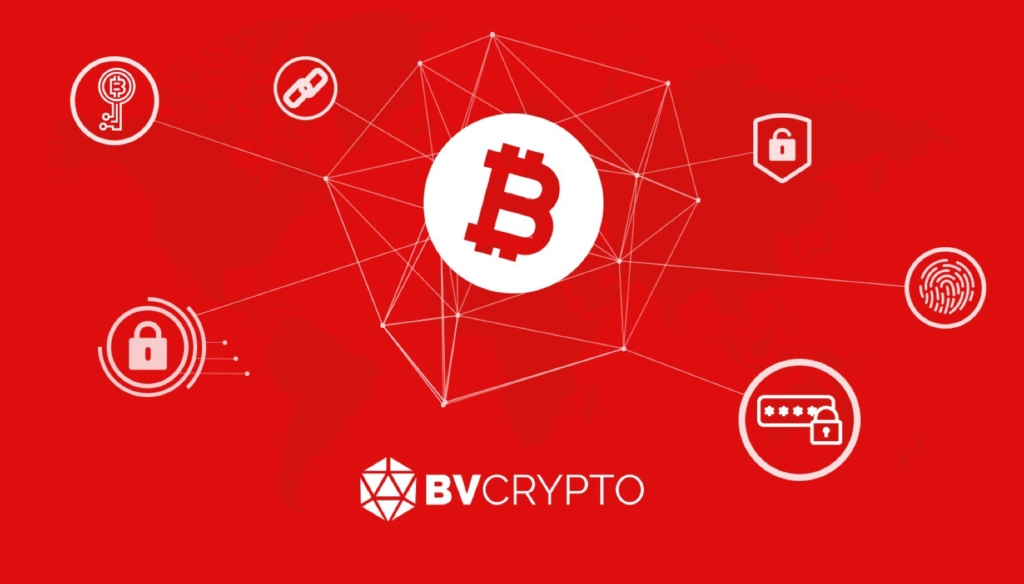
As a result, with the Taproot update and the Schnorr signature mechanism included in this update, more transactions will be confirmed at the same time, complex (multiple conditional) and multi-participant transactions will be processed on the Bitcoin network, the privacy level of the Bitcoin network will be increased, and the amount of commission paid by users will decrease. In addition, with the Taproot update, smart contracts with Schnorr infrastructure can also be integrated into the Bitcoin network.
It can be predicted that the Taproot update will not please public authorities such as tax authorities, who intend to control Bitcoin as much as possible with regulations and taxes by monitoring the transactions on the network. However, the decentralized and anonymous nature of Bitcoin allows miners to make decisions independently of public authorities. Therefore, it will be revealed in the coming weeks whether the Bitcoin community will accept the Taproot update by evaluating it completely within its own dynamics, away from such considerations. At the same time, this democratic voting system on the Bitcoin network once again demonstrates how the decentralized nature of Bitcoin is resistant to network manipulation and malicious use.
Written By: Berkay Aybey
The opinions and comments expressed here belong to BV Crypto. BV Crypto cannot be held responsible for any financial transactions made on the basis of this post. Every investment and trading move involves risk. When making your decision, you should do your own research.